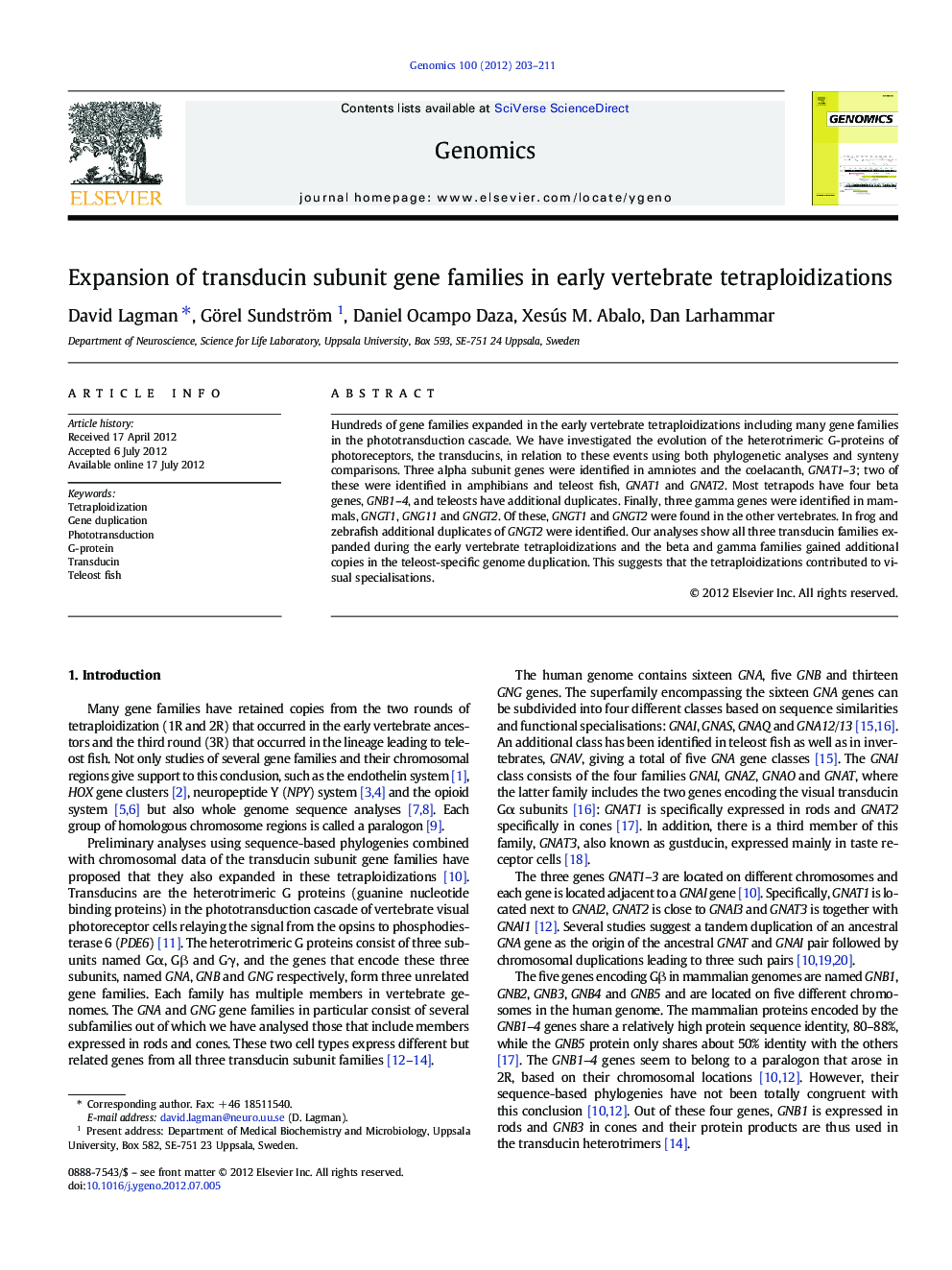| Article ID | Journal | Published Year | Pages | File Type |
|---|---|---|---|---|
| 5907904 | Genomics | 2012 | 9 Pages |
Hundreds of gene families expanded in the early vertebrate tetraploidizations including many gene families in the phototransduction cascade. We have investigated the evolution of the heterotrimeric G-proteins of photoreceptors, the transducins, in relation to these events using both phylogenetic analyses and synteny comparisons. Three alpha subunit genes were identified in amniotes and the coelacanth, GNAT1-3; two of these were identified in amphibians and teleost fish, GNAT1 and GNAT2. Most tetrapods have four beta genes, GNB1-4, and teleosts have additional duplicates. Finally, three gamma genes were identified in mammals, GNGT1, GNG11 and GNGT2. Of these, GNGT1 and GNGT2 were found in the other vertebrates. In frog and zebrafish additional duplicates of GNGT2 were identified. Our analyses show all three transducin families expanded during the early vertebrate tetraploidizations and the beta and gamma families gained additional copies in the teleost-specific genome duplication. This suggests that the tetraploidizations contributed to visual specialisations.
⺠All 3 transducin families, α, β and γ, duplicated in the basal tetraploidizations. ⺠The β and γ families expanded further in the teleost-specific tetraploidization. ⺠These tetraploidizations contributed to the evolution of vertebrate vision. ⺠This is supported by many neighbouring gene families.
